While the date of the garden’s peak is arguable, there is no doubt that the year’s floral highlight is when yellow, pink, orange, and red deciduous Exbury azaleas flower in front of the native fringetree (Chionanthus virginicus).
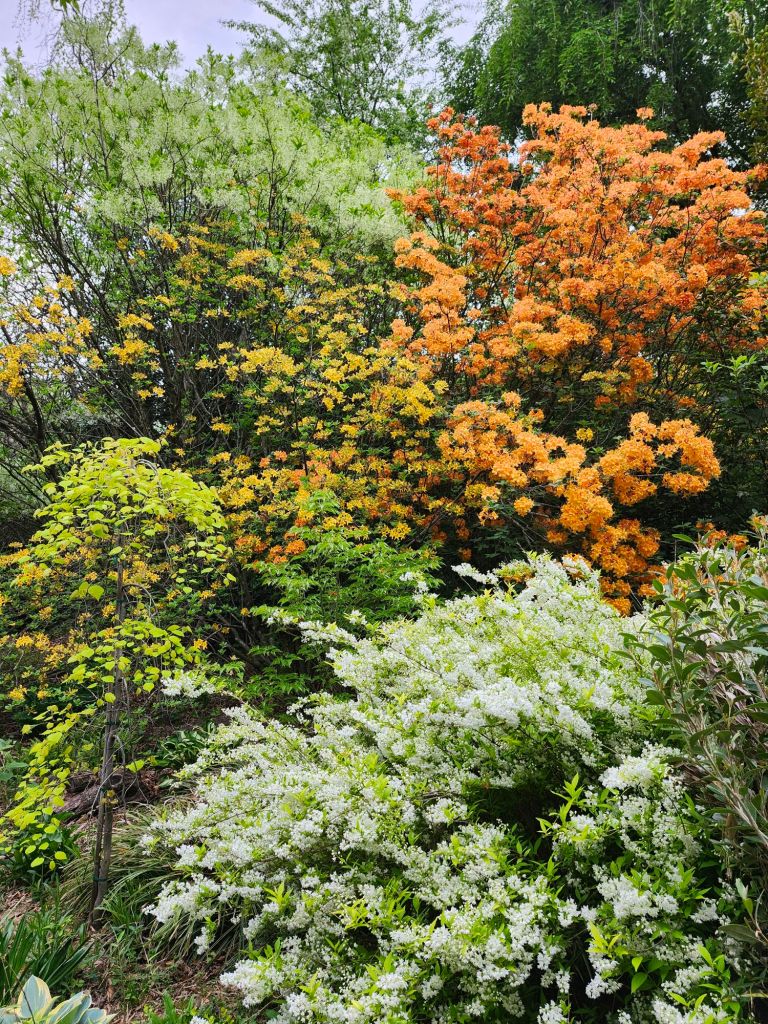

In the garden’s first decade, a variety of evergreen azaleas flowered dependably, but all were prone to lacebug. Over a period of years, this might diminish growth but rarely prove fatal. But, they didn’t look right, so as other plants caught my eye, all were pulled out except a grouping at the forest’s edge just off the property. Delaware Valley White and an unidentified pink are going strong (below), with no regrets that they weren’t removed.
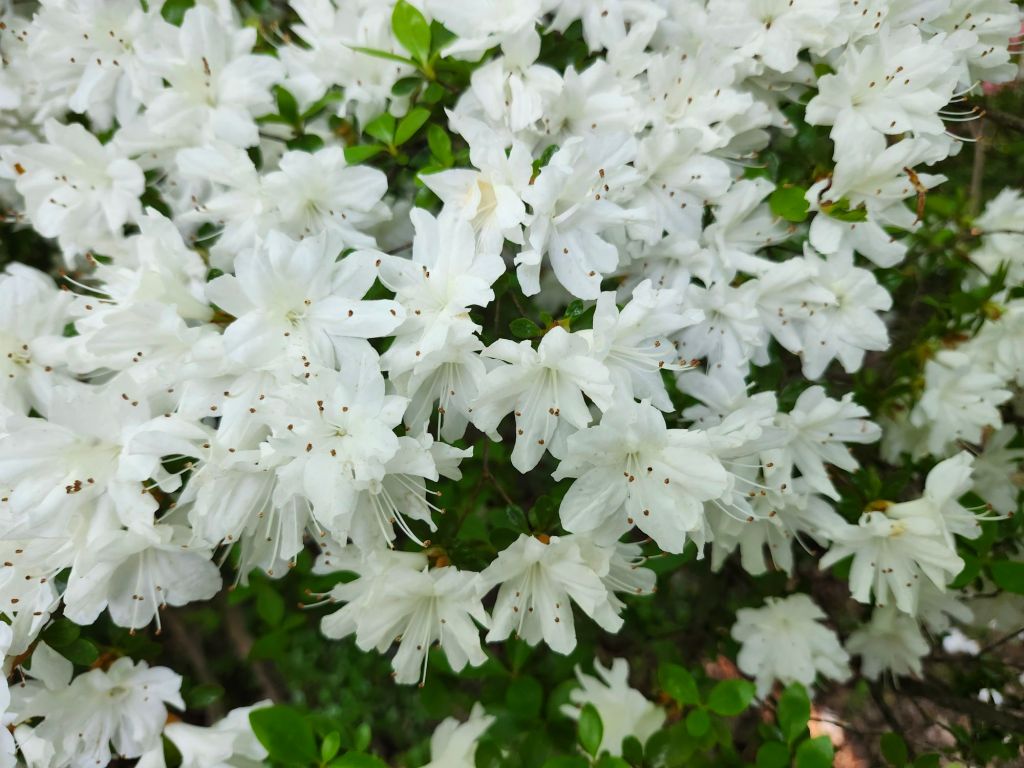
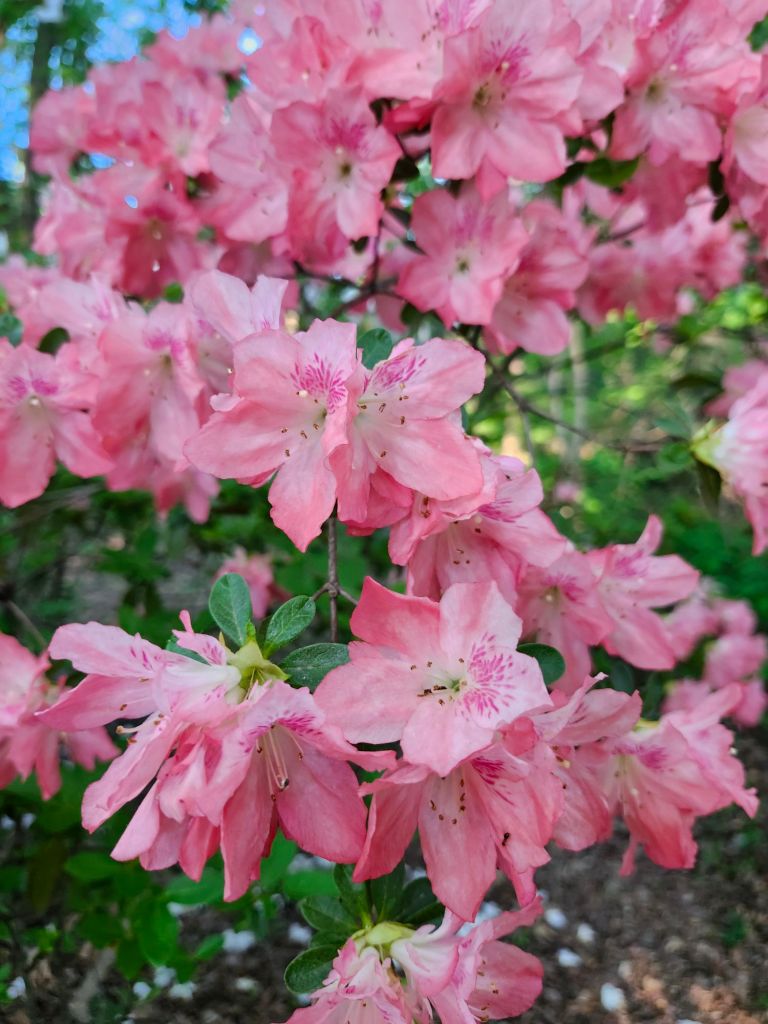
On the sunnier side of the property, a handful of deciduous azaleas were planted. All are fragrant, though I can’t smell a thing, but what I like most is the colors that are considerably brighter than their evergreen cousins. And, all have grown to fifteen feet so that the top of the fringetree stands just above while all flower simultaneously.
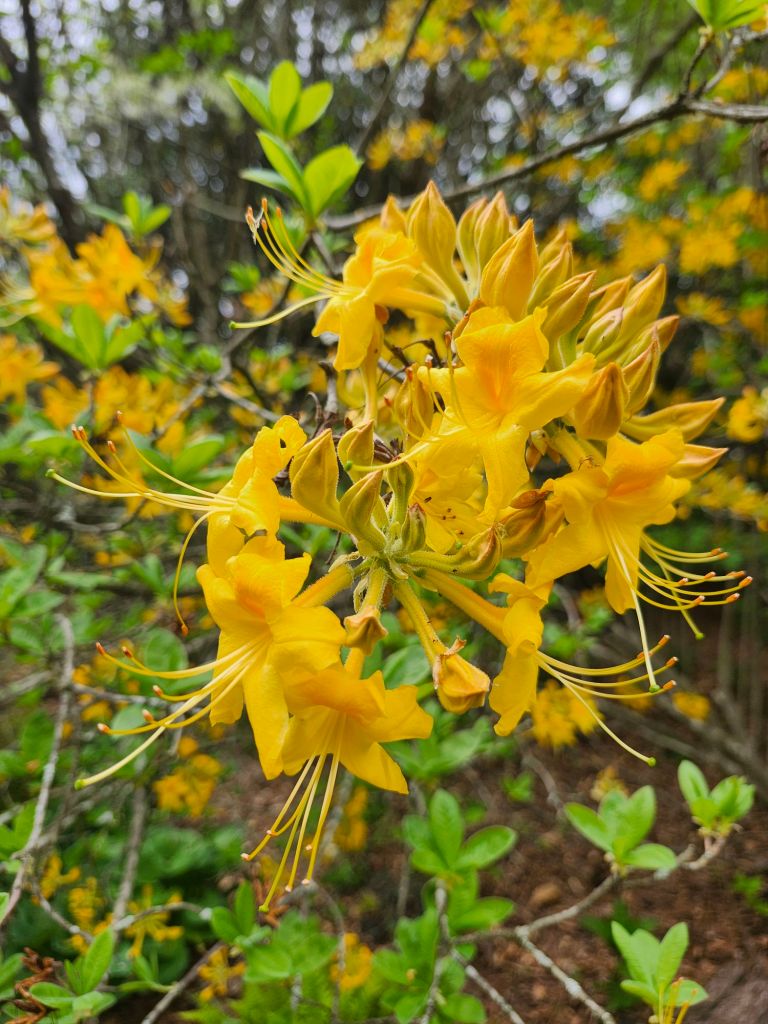



Start to finish, this is seen for two weeks. And then, it’s over until late April next year. While many plants in slightly different sunlight exposures stagger flowering to extend a season of bloom, the azaleas start and end within two days.
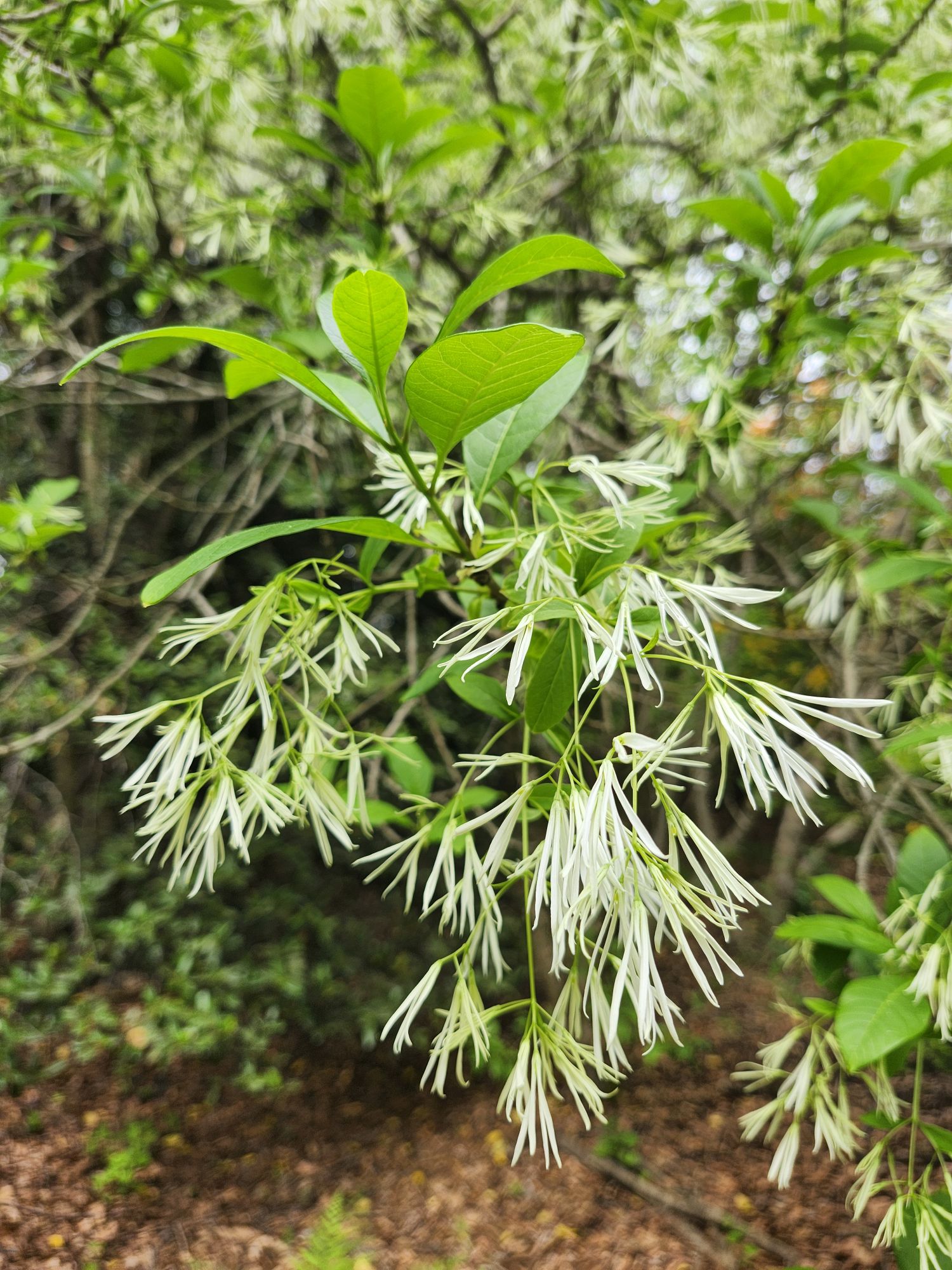
Today, I see the decline. The orange azaleas are fading, and the ground beneath the fringetree is littered with ribbony, white petals. Soon, all will be past bloom, but it has been a glorious two weeks.
love my fringe trees and its nice that they leave a carpet of white below as it goes out of bloom
This week, I’m tracking fallen flowers of the fringetrees and Chinese snowball viburnum down the paths. It looks like we’ve had a nice snow.